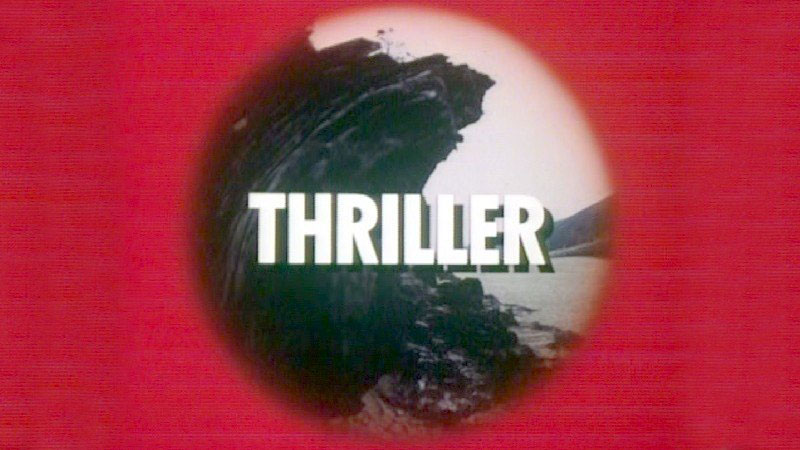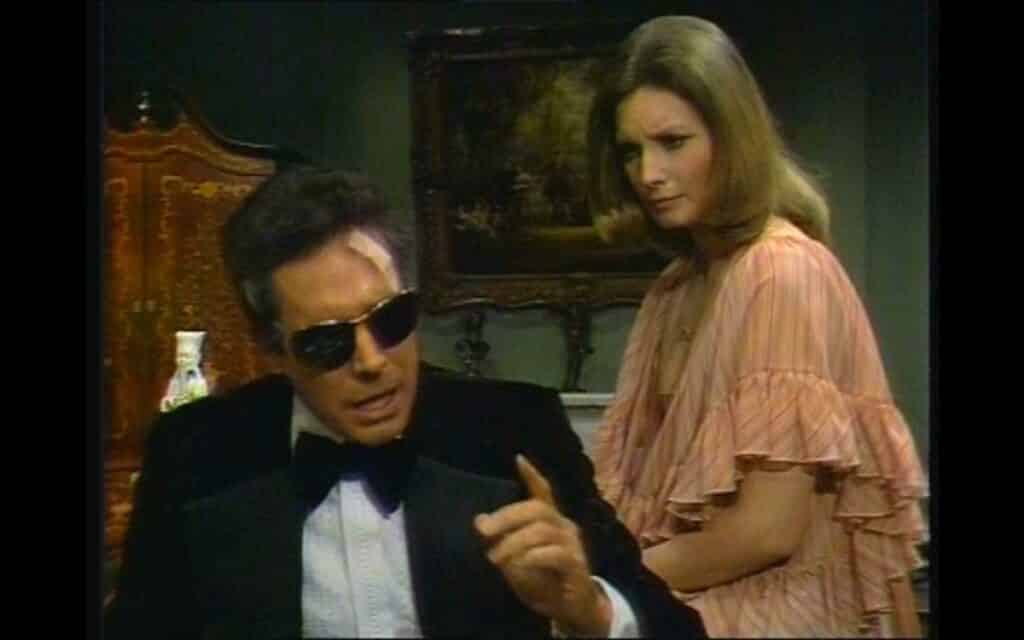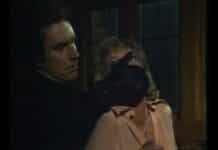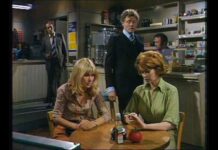A blinded jazz pianist thinks he recognises the voice of the man who killed his wife and destroyed his sight many years earlier. RICHARD PHILLIPS-JONES on the Thriller episode, The Next Voice You See.

TITLE: Thriller – The Next Voice You See
BROADCAST: 17 May 1975
STARRING: Bradford Dillman, Catherine Schell, Geoffrey Chater, Ray Smith, Terence Sewards, Nigel Havers
WRITER: Terence Feely (from a story by Brian Clemens)
DIRECTOR: Robert Tronson
1964: American Jazz pianist Stan Kay (Dillman) is in a London bank with his wife when an armed gang descend to rob the place. Caught in the crossfire, Mrs. Kay is shot dead and Stan is blinded for life.
1975: Back in England after a long absence, Stan is booked to perform at the lavish party of wealthy socialite and wine collector Sir Peter Hastings (Chater). Despite the chatter amongst the guests, Kay appears to be enjoying his performance until he recognises a voice in the crowd as that of the armed robber who slew his beloved spouse.
Assisted by his agent, Julie (Schell) and initially disbelieving security man Ben (Smith), Kay has to work out which of the guests is the guilty party, but it seems that everyone he encounters came into their wealth around the same time by unconventional means, which makes it very hard to narrow them down…

Robert Tronson makes his return to Thriller with his first series entry since series one’s brilliant The Colour Of Blood. The Next Voice You See, however is a very different creature, with a massive cast by Thriller standards: That’s arguably to its detriment, for there really isn’t the scope to develop the wealth of characters enough to get the most out of the “who is the killer” premise.
Perhaps having bitten off more than it can chew, the production doesn’t seem quite able to do justice to what’s on the page but that’s not to say that Tronson (an old hand at this sort of thing) is to blame: Aided by the ever-reliable ATV crew he works visual wonders with what’s available, and one can’t help but marvel at the fluidity of the camerawork in the crowded party scenes (those massive 70’s TV-cameras were not the easiest thing to manoeuvre!) and a visual nod to Hitchcock’s iconic swooping party shot from Notorious (1946).
On the performance side, Dillman and Schell play off each other well, Chater (returning from The Colour Of Blood) shines as the somewhat reluctant host and there’s an entertaining turn by a young Nigel Havers as a particularly lecherous party guest, but most of the remaining cast don’t have sufficient opportunity to make a mark – those that do get more than a modicum of dialogue mostly come across as identikit rich bores, and when the killer is finally revealed the denouement doesn’t quite have the required impact because even the culprit hasn’t been given any real opportunity to get under the viewer’s skin.
Still, the material would certainly be worth revisiting: The lighter, smaller and more flexible camera equipment available now, the relative ease of modern sound editing which could overlap more detailed conversations from the possible suspects, these could make one hell of a difference in capturing what Terence Feely was clearly aiming for. As it stands, The Next Voice You See is an enjoyable enough way to spend 64 minutes but, for an audience spoilt by its very best instalments Thriller was always much, much more than that.
TRIVIA NOTES:
TV-Movie version retitled Look Back In Darkness, with a rather trippy title sequence accompanied by a Simon Park library music piece which could easily be mistaken for an Air outtake (no bad thing in my book).
Hammer fans: Look out for John Forbes-Robertson (The Vampire Lovers, Legend Of The 7 Golden Vampires) as Dr. Mace.
The subject of blindness had been used as a plot device in Thriller previously, in the Feely-penned The Eyes Have It back in series one. See also Clemens’ pre-Thriller screenplay for Blind Terror (aka See No Evil, 1971).
One can’t help wondering if ATV were trying to compensate for the larger cast by saving a bit of money on this one, for the opening bank raid location (tellingly shot on videotape rather than film) looks suspiciously like the Neptune House office block at the Elstree studios. The building had previously posed as the headquarters of SHADO for UFO (1969-70) and would also double as Grange Hill school (for its later episodes) and Holby City hospital after the BBC bought the complex.








Neptune House it was indeed standing in for the bank at the beginning, including a re-dressed foyer for the bank interior – and shot with Outside Broadcast equipment (likely the single camera ‘Monoculus’) – as they were on-site in the studio grounds, not unlike the shooting of the corridor/offices within Neptune House for ‘I’m the Girl He Wants to Kill’ (albeit on a smaller scale). I take the point about the vast number of characters (including extras) precluding much character development for the majority of the ‘guests’ in particular. I think that the ‘whodunit’ aspect (although obviously a key part of the storyline) was nevertheless a secondary consideration here in both script and production – highlighted by the relatively low profile of the actor was turns out to be the robber/killer of a decade ago! The continuing inherent threat to Dillman from whatever source in an enclosed space from which perpetrator and potential victim were both ‘stuck’ was regarded as key – and the theatrical device of playing out the story in effectively real time in a single (if large) interior setting was what was being attempted – like Hitchcock’s ‘Rope’. In those terms it is almost certainly the apotheosis of this style in the series. The staging in the cellar at the conclusion is a particular masterclass alongside a number of creeping threats in various parts of the house. Tronson (who personally had worked with star Bradford Dillman before) indeed delivered the goods – and his next and final instalment will be yet again a completely different structure of ‘THRILLER’ again! A final word of praise for Catherine Schell – and her character of Julie – yet another example of female characters who were far from helpless victims!
It must have been a change for Bradford Dillman to not play the villain (see every time he showed up on “Barnaby Jones”)